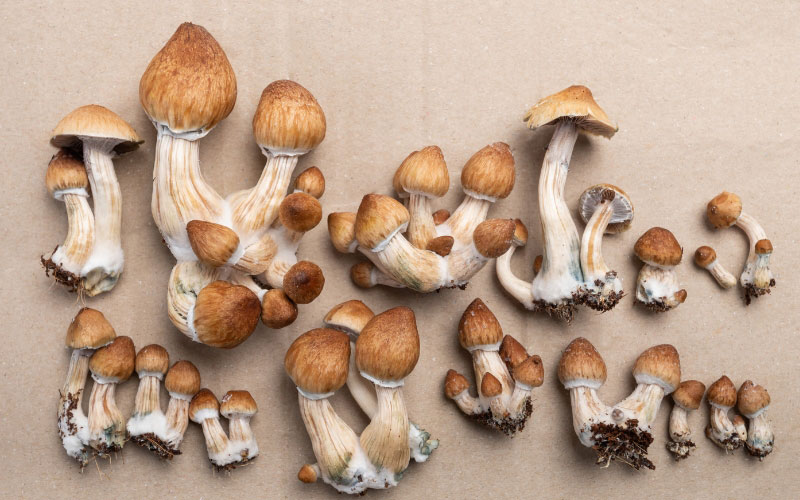Law-enforcement seizures of psilocybin have skyrocketed by 369% in the United States since 2017, a new study concludes.
An analysis of national and state-level trafficking data revealed that across the country, seizures of psilocybin rose from 402 confiscations in 2017 to 1,393 confiscations in 2022.
The amount of the seized drugs nearly quadrupled – from 226 kilograms to 844 kilograms in the same time frame.
The study was led by researchers at NYU Grossman School of Medicine and other members of the National Drug Early Warning System, an organization that conducts surveillance of shifting drug trends.
“Our findings … suggest that popularity and availability of this psychedelic may be increasing,” said study lead author Joseph Palamar, an associate professor in the Department of Population Health at NYU Langone Health. “Although psilocybin is by no means the most dangerous drug, adverse effects do happen, so heightened prevention efforts and harm-reduction education may be necessary.”
Psilocybin is in the midst of a renaissance in the medical community, and a growing number of clinical trials are evaluating its potential to treat conditions such as alcohol-use disorder, post-traumatic stress disorder and treatment-resistant depression.
At the same time, restrictions around psilocybin – a controlled substance under federal law – have loosened in a number of American cities.
Oakland, California, for example, decriminalized psychedelic mushrooms in 2019, and Colorado voters in 2022 passed a ballot initiative to decriminalize mushrooms for people 21 and older. In 2020, Oregon voters passed a ballot measure that made it the first state to decriminalize mushrooms and other drugs.
Midwest, West Had Highest Number of Seizures
Palamar says the new study, publishing online Feb. 6 in the journal Drug and Alcohol Dependence, is believed to be the first of its kind to examine trends in psilocybin seizures across the nation.
For the research, the team analyzed data from the High Intensity Drug Trafficking Areas program, created by Congress to measure and help reduce illegal drug trafficking and production. The program oversees 33 regional areas throughout all 50 states and the District of Columbia, and collects data on reports of drug seizures made by thousands of federal, state and local law-enforcement groups.
As part of the study, the team analyzed 4,526 psilocybin seizure reports from January 2017 through December 2022. They categorized the annual number of confiscations and the total weight of seized drugs by state. Then, they organized the data into four main census regions in the country: the Northeast, West, South and Midwest.
Among the findings, the analysis revealed that the highest number of psilocybin seizures occurred in the Midwest (36% of confiscations), with the West following closely behind (33% of confiscations).
In terms of overall weight, 4,380 kilograms of psilocybin were captured within the study period, with the greatest proportion (43%) coming from the West.
Palamar notes that the West’s environmental conditions, which are well-suited for growing the mushrooms from which the compound is derived, may help explain this finding.
“These results highlight the need to better understand not only how the availability and popularity of psilocybin is changing and why, but also how the drug affects those who use it recreationally,” Palamar asserted.
Palamar says that more research is needed to specifically examine whether decriminalization efforts around psilocybin and other drugs may be affecting both use and the number of seizures.
Palamar cautions that law-enforcement seizures aren’t a perfect indicator of drug availability or use. In addition, just because a confiscation occurred in a particular state doesn’t mean that the psilocybin was intended for use in that area. For example, some of the reports in the data reference large shipments that may have been headed to other states for sale.

